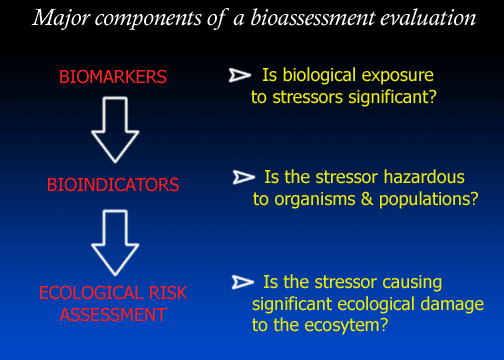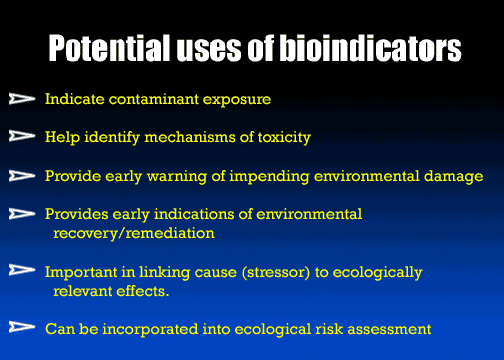

Design and use of bioindicators:

| The major components of a bioassessment evaluation are: (1) determine if organisms have been exposed to stressors (biomarkers), (2) determine the hazard or effect of stressors on organisms and populations (bioindicators), and (3) conduct ecological risk assessment to determine ecological damage. (See fig.3 under Bioindicators) |

| Field bioassessment studies should include a combination of both rapidly responding sensitive biomarkers and the more ecologically relevant bioindicators with a focus at the individual organism level. Organism-level responses provide a pivotal point through which mechanistic understanding (see next figure) and the ecological consequences of stressors can be linked. |

| Increasing levels of biological organization result in decreasing mechanistic understanding but increasing levels of ecological significance. A selected suite of measurements along this continuum of levels of organization is recommended in the design of bioassessment studies in aquatic ecosystems. |

